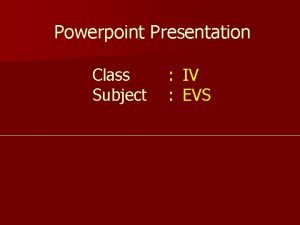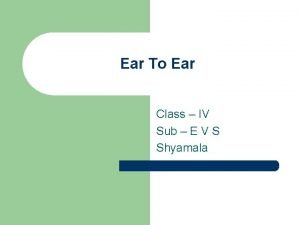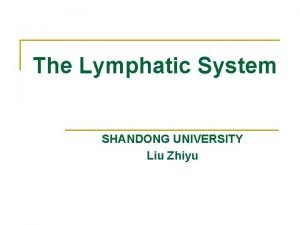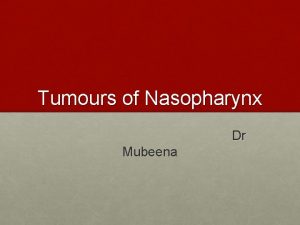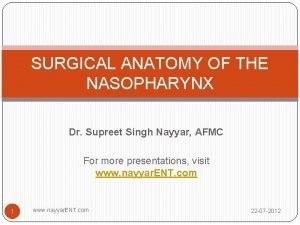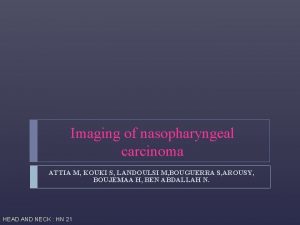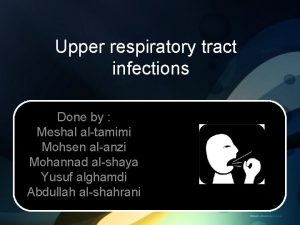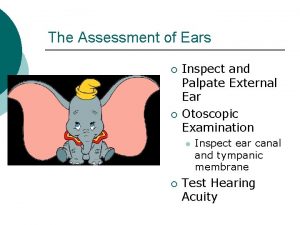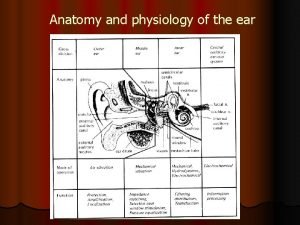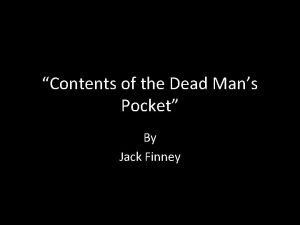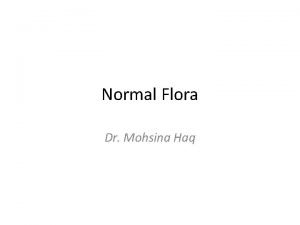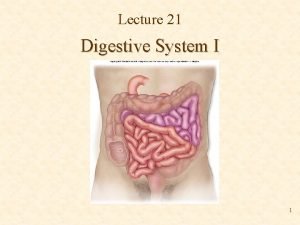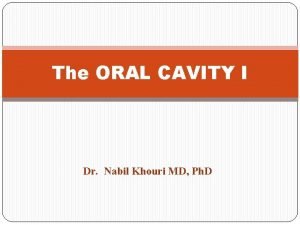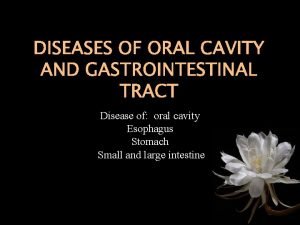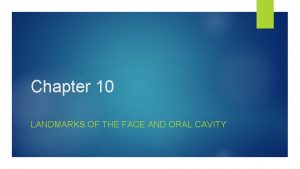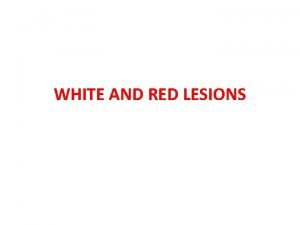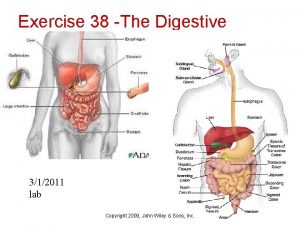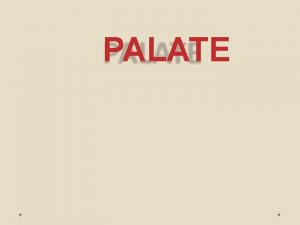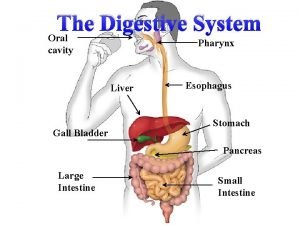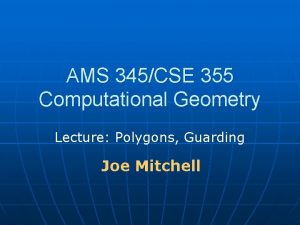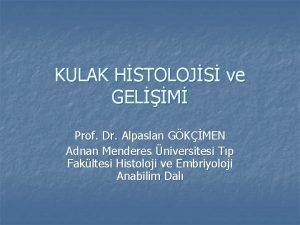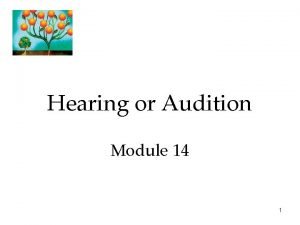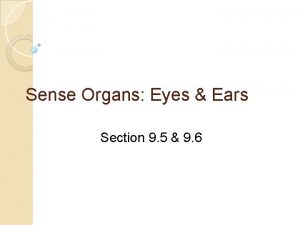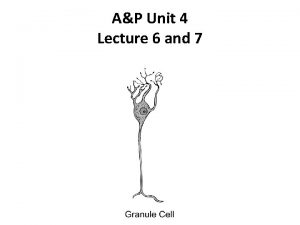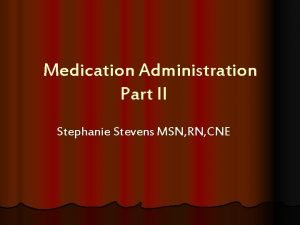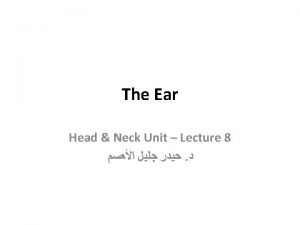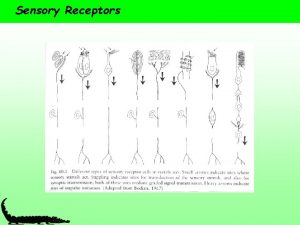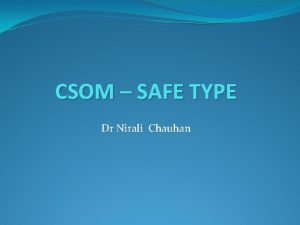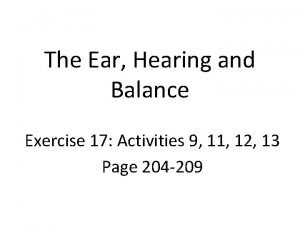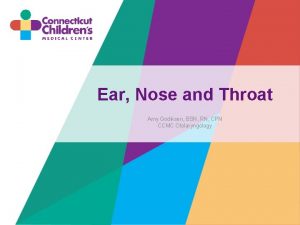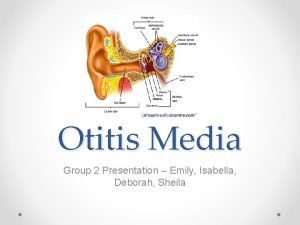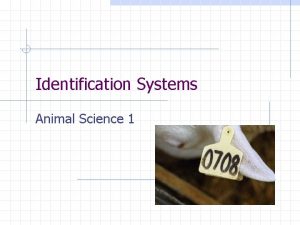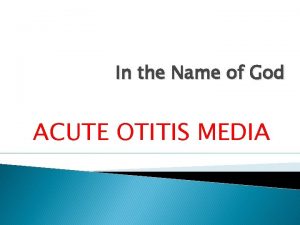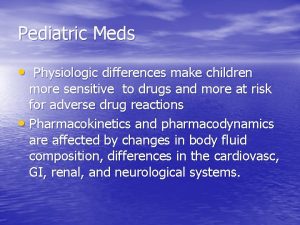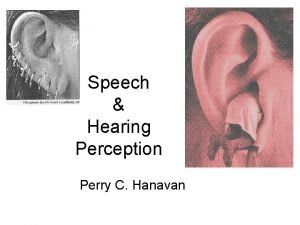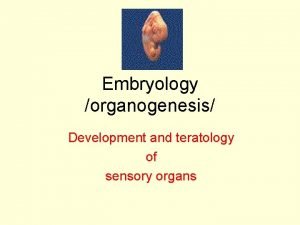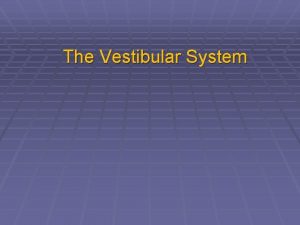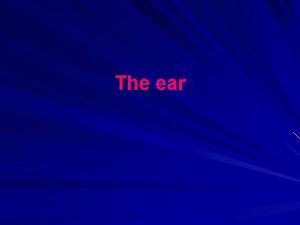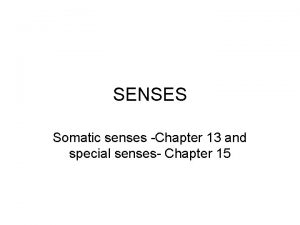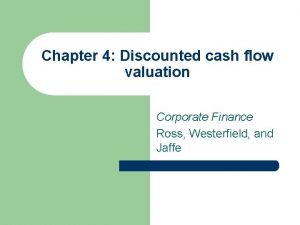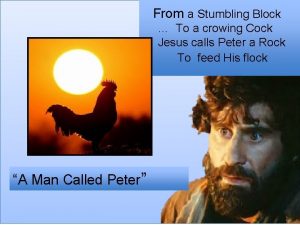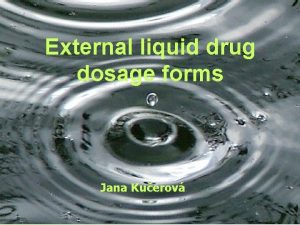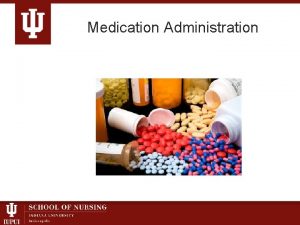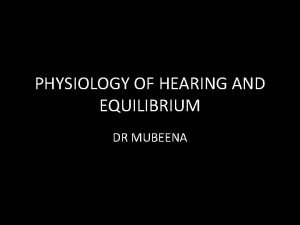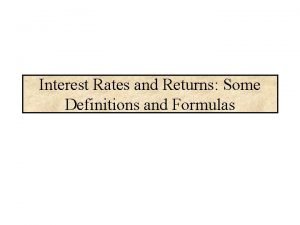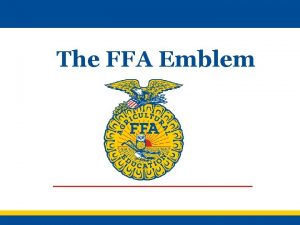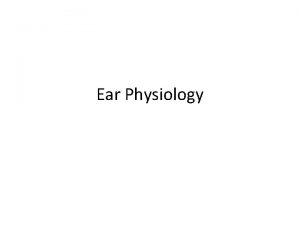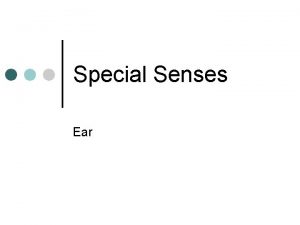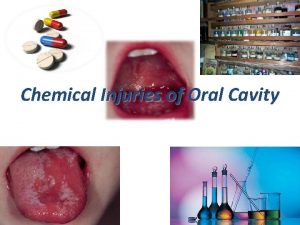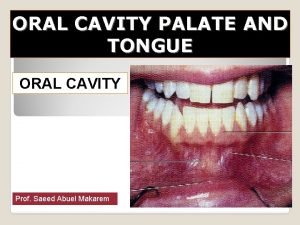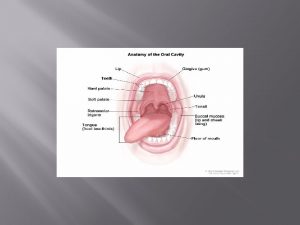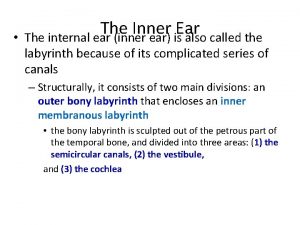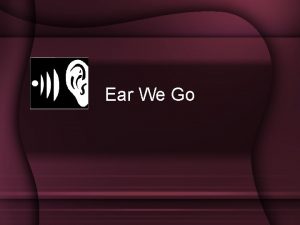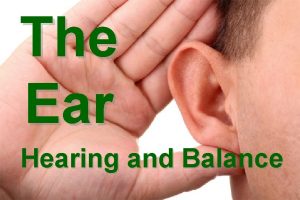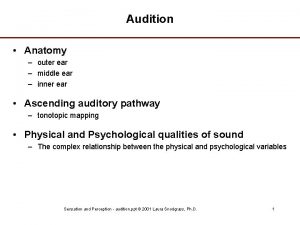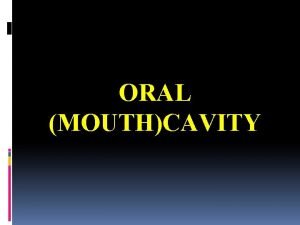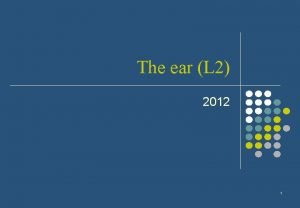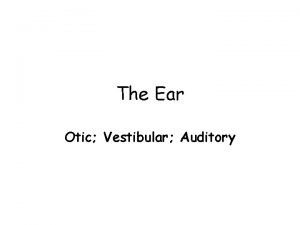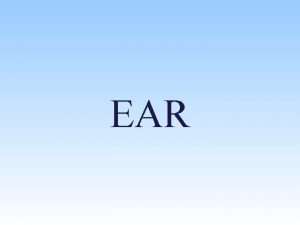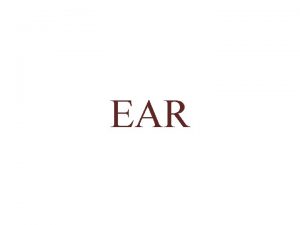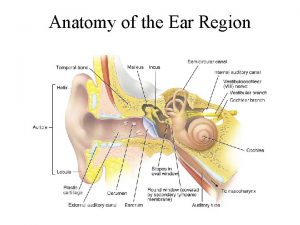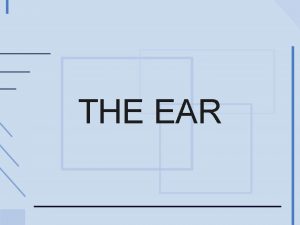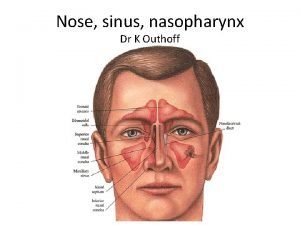Contents Nasopharynx n Oral cavity n Ear external




































































- Slides: 68


Contents Nasopharynx n Oral cavity n Ear (external, middle, inner ear) n Orbit n Larynx n Salivary glands n Neck space & vessels n

Nasopharynx & Oropharynx


Nasopharynx

Nasopharynx


Nasopharynx n Keywords: -- Rosenmüller fossa, Torus tubarius , Eustachian tube orifice -- Pterygopalatine fossa (PPF) -- Parapharyngeal space (PPS) -- Retropharyngeal space (RPS) -- Prevertebral musculature -- Foramen lacerum-ICA (perivascular), -- Foramen ovale-V 3 (perineural)

Rosenmüller fossa, Torus tubarius , Eustachian tube orifice

940127 940930

Pterygopalatine fossa (PPF)




Parapharyngeal space (PPS) n n Fat Branches of cranial nerve V 3 Ascending pharyngeal artery Pharyngeal venous plexus



Retropharyngeal space (RPS) Fat n Lateral retropharyngeal nodes (of Rouviere) n Medial retropharyngeal nodes n


Prevertebral musculature

Foramen lacerum-ICA

Foramen ovale-CN V 3 Foramen lacerum-ICA Foramen lacerum Foramen ovale

Oropharynx (OP) & Oral cavity n Keywords: -- Hard & Soft palate -- Tongue -- Palatine tonsil; Lingual tonsil (tongue base) -- Posterior OP wall




Ear n Keywords: -- Tympanic membrane, -- Ossicular chain (Malleus, Incus, Stapes) -- Facial nerve -- Cochlea, Semicircular canal -- External and internal auditory canals








Orbit n Keywords: -- Extraconal & Intraconal -- Lacrimal glands -- Muscles -- Superior & inferior orbital fissures -- Optic canal




Superior & inferior orbital fissures

Larynx Composed of a mucosal surface and a supporting cartilaginous skeleton. n Mucosal surface: epiglottis, true and false cords, aryepiglottic folds, and pyriform sinuses n Skeleton: Hyoid cartilage, thyroid cartilage, cricoid cartilage, and arytenoid cartilage n Between mucosa and skeleton: paraglottic and preepiglottic spaces (loose areolar tissues, lymphatics, muscular structures) n

Skeleton n n Hyoid Bone - attachment to epiglottis and strap muscles. Thyroid Cartilage - anterior attachment of vocal folds. Posterior articulation with cricoid cartilage. Cricoid Cartilage - complete ring. Articulates with thyroid and arytenoid cartilages. Arytenoids - two cartilages which glide along the posterior cricoid and attach to posterior ends of vocal folds.

Skeleton Hyoid Bone n Thyroid Cartilage n Cricoid Cartilage n Arytenoids n

Larynx




Larynx n Divisions -- Supraglottis -- Glottis -- Subglottis -- Paraglottic (Parapharyngeal) space -- Preepiglottic space

Supraglottis n n n Usually covered with respiratory epithelium containing mucous glands. Epiglottis - leaf-shaped mucosal-covered cartilage, which projects over larynx. Aryepiglottic folds (AE folds) - extend from the lateral epiglottis to the arytenoids. False vocal cords - mucosal folds superior to the true glottis. Separated from true vocal folds by the ventricle. Ventricle - mucosal-lined sac, variable in size which separates the supraglottis from the glottis.

Supraglottis Suprahyoid epiglottis (both lingual and laryngeal aspect) n Infrahyoid epiglottis n False vocal cords (ventricular bands) n Aryepiglottic folds (laryngeal aspects) n Arytenoid cartilages n Ventricles n



Glottis n The true vocal folds attach to the thyroid cartilage at the anterior commissure. The posterior commissure is mobile, as the vocal folds attach to the arytenoids. Motion of the arytenoids effects abduction or adduction of the larynx. The bulk of the vocal fold is made up of muscle covered by mucosa. The free edge is characterized by stratified squamous epithelium. The vocal folds abduct for inspiration and adduct for phonation, cough, and valsalva.


Glottis n True vocal cords, including anterior and posterior commissures



Subglottis n Area from under surface of the true vocal cords to inferior surface of the cricoid cartilage

Salivary glands n n Parotid glands Submandibular glands Sublingual glands Minor: tongue, cheeks, lips, palate

Parotid glands The largest of the salivary glands n The duct to this gland (also known as Stensen’s duct) empties within the buccal cavity (the inside of the cheek). n The facial nerve (CNVII) runs through this gland n


Submandibular glands n The Submandibular Gland secretes saliva into ducts called 'Warton's Ducts'. These ducts open on either side of the lingual frenulum.


Sublingual glands n Lie anterior to the submandibular glands under the tongue, beneath the mucous membrane of the floor of the mouth. They are drained by 820 excretory ducts. The largest duct, the sublingual duct (of Bartholin) joins the submandibular duct to drain through the sublingual caruncle.


Neck space & vessels

Carotid spaces n Contents: Internal carotid artery Internal jugular vein CN IX, X, XII: nasopharyngeal CS CN X only: oropharyngeal & hypopharyngeal CS Sympathetic plexus Lymph nodes


Thanks for your attention
 Body cavity
Body cavity Ear to ear class 4 evs ppt
Ear to ear class 4 evs ppt Make a collage on animals having external ears
Make a collage on animals having external ears Tympanic cavity ear function
Tympanic cavity ear function Superficial to deep
Superficial to deep Hamartomatous nidus
Hamartomatous nidus Sinus of morgagni
Sinus of morgagni Salpingopharyngeus
Salpingopharyngeus Blunning
Blunning Nasopharynx
Nasopharynx Basic anatomy terminology
Basic anatomy terminology Ligaments of the stomach
Ligaments of the stomach Boundaries of epiploic foramen
Boundaries of epiploic foramen Ventral cavity
Ventral cavity Nerve supply of ear
Nerve supply of ear External auditory meatus
External auditory meatus Physiology of external ear
Physiology of external ear External conflict in contents of the dead man's pocket
External conflict in contents of the dead man's pocket Normal flora of oral cavity
Normal flora of oral cavity Pharynx and oral cavity
Pharynx and oral cavity Median palatal raphe
Median palatal raphe Epithelial component
Epithelial component Landmarks of the face and oral cavity chapter 10
Landmarks of the face and oral cavity chapter 10 Elixir dosage form example
Elixir dosage form example White appearance
White appearance Exercise 38 review sheet art-labeling activity 1 (2 of 2)
Exercise 38 review sheet art-labeling activity 1 (2 of 2) Palatine aponeurosis
Palatine aponeurosis Digestive system cavity
Digestive system cavity External-external trips
External-external trips Ear clipping algorithm
Ear clipping algorithm Ear development
Ear development Theories of hearing
Theories of hearing Nose teeth and hair
Nose teeth and hair Close or far
Close or far Where does transduction occur in the ear
Where does transduction occur in the ear Labyrinth ear
Labyrinth ear Ear instillation
Ear instillation Bony labrynth
Bony labrynth What is a buretrol
What is a buretrol Rhinorrhea
Rhinorrhea Classification of sensory receptors
Classification of sensory receptors Ear formula
Ear formula Billy collins introduction to poetry meaning
Billy collins introduction to poetry meaning Oto eni ear drops dosage
Oto eni ear drops dosage Middle ear risk index
Middle ear risk index Vestibular membrane
Vestibular membrane Ccmc ear nose and throat
Ccmc ear nose and throat Otodex ear drops for dogs side effects
Otodex ear drops for dogs side effects External auditory meatus
External auditory meatus What does fluid in the ear look like
What does fluid in the ear look like Define ear notching
Define ear notching Ear infection pictures vs normal
Ear infection pictures vs normal Kevin wolf bis
Kevin wolf bis Instilling ear drops in child
Instilling ear drops in child Pinna acoustics
Pinna acoustics Dorsall
Dorsall Ampulla anatomy ear
Ampulla anatomy ear Tympanic antrum
Tympanic antrum Ear ossicles
Ear ossicles War of jenkins ear apush
War of jenkins ear apush Apr vs ear
Apr vs ear Empathy statements
Empathy statements Impedance matching ear
Impedance matching ear Which disciple cut off the ear
Which disciple cut off the ear Solutio jarish
Solutio jarish Slidetodoc.com
Slidetodoc.com Ear
Ear Bond formula
Bond formula Ffa ear of corn
Ffa ear of corn

